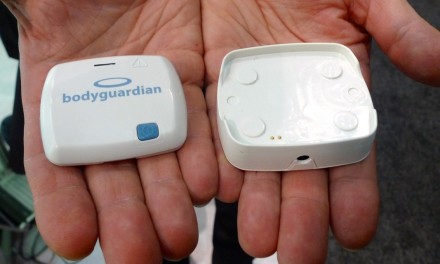A recent NY Times article reported that hotel Wi-Fi capacity was again being challenged, this time by iPads and other tablets, or more specifically, tablet users. The Times notes that these users may have a smart phone and laptop going at the same time they are sucking up streaming video. The high bandwidth demand of these devices, or more specifically, their uses, is said to be reducing download speeds back to the good old days of dial-up connections. A likely solution will be a tiered charge structure, similar to the newest cellular data plans, with the result that you can waste bandwidth if you don't care what it costs. A more general report on current and future wireless demand versus capacity has been produced by the Global Information Industry Center at the University of California San Diego. A less foreboding report on medical uses of Wi-Fi has been produced by the Wi-Fi alliance.
Smart phones have a prior history of overwhelming cell phone networks, such that in dense environments someone can't make a phone call because too many other people are watching reality show reruns and bad movies. Now some cellular devices have been looking at switching to Wi-Fi when it is available, as explained here. This leads to the conflict ridden situation of cellular wanting to use Wi-Fi to solve its capacity problems at the same time that Wi-Fi is being over loaded by other devices. Cellular resistant building structures, which are increasing, also can create a desire to shift to Wi-Fi.
Now think about hospitals. Tablets are surely making inroads here as well, along with smart phones and in house wireless VoIP. Medical devices are also increasingly wireless as has been noted in these pages before here and here. There is also the smart phone wireless app arena (which may or may not be regulated medical devices) as discussed here and here.
Certainly the public access side of a hospital's wireless network can be limited and segregated. However prioritizing between multiple medical applications is far more challenging both clinically and technically. It must also be remembered of course that lost medical data or lack of clinical telephony can be life threatening, as opposed to merely annoying.
In this demanding arena few wireless medical systems are at least initially tested in a fully functioning environment. Yet there is a vast difference between whether the wireless capability (as well as the wired) is able to function when tested alone, and whether it is capable of functioning around the clock and throughout the year in an actual hospital when static and when roaming. In the latter case when roaming across access points, drop-outs may result in data loss and may not respond well when access is restored. While the link may recover critical information such as which patient is involved may not be available.
In addition it may be possible to add one wireless application today that works in the current environment, but which may not work when the next one or ten or 100 other wireless applications are added later, and perhaps not much later. In this regard vendor assurance, if ever fully believable, cannot be accepted outside the context of the wireless system and devices currently deployed. (By way of bad analogy, such an assurance are like a car salesperson telling you that with this car you won't have to worry about highway traffic.)
In this regard the effective hospital application has been summarized as requiring "assurance" which includes coverage, signal strength, capacity, and certainty. The "utility" analogy is often used here, i.e. the wireless service should operate in the background and be something I don't ever have to think about, just give me more and more wireless devices and they will all play nicely together. (Those who have been through electrical blackouts and brownouts may have a different perspective than others on the reassurance provided by the utility analogy.)
It is clear that wireless and wired capacity have to both be actively controlled and monitored. Besides being totally logical, this is consistent with IEC 80001 (discussed here) which addresses hospital network risk management. This active control requires a centralized coordinator who has the authority, knowledge and system resources to not allow any new wireless application to be deployed without specific consent based on appropriately rigorous tests. There must also be complete inventory of all approved wireless users so there is a record of who is using the system. New systems or upgrade designs must also take capacity seriously (see here for example).
Certainly wireless, using Wi-Fi or otherwise, offers advantages in health care, although perhaps not, wireless will need to be limited to those applications that really need it. In any case, capacity is a challenge that is likely to get worse before it gets better.
Pictured above are Philips' Intelliview Cableless Measurements wireless SpO2 sensors that use the same ISM band frequencies as Wi-Fi. This photo was taken at the Philips booth at HIMSS 2010 with their permission.



Companies have been springing up everywhere in an effort to serve the growing need for a wireless building. While there are many short-term quick fixes, in building wireless solutions often come in the form of a distributed antenna system. The das system works for any industry, hospitality and healthcare included, and provides a reliable network for a building or area that is compatible with new technology.
The downfall of the das system is that it requires professional monitoring, which many companies are loathe to invest in after installing a costly inbuilding das solution. Before choosing das vendors it is important to ensure that they have the capability to monitor the system through remote access, or that the medical center will have a qualified individual to perform the task.